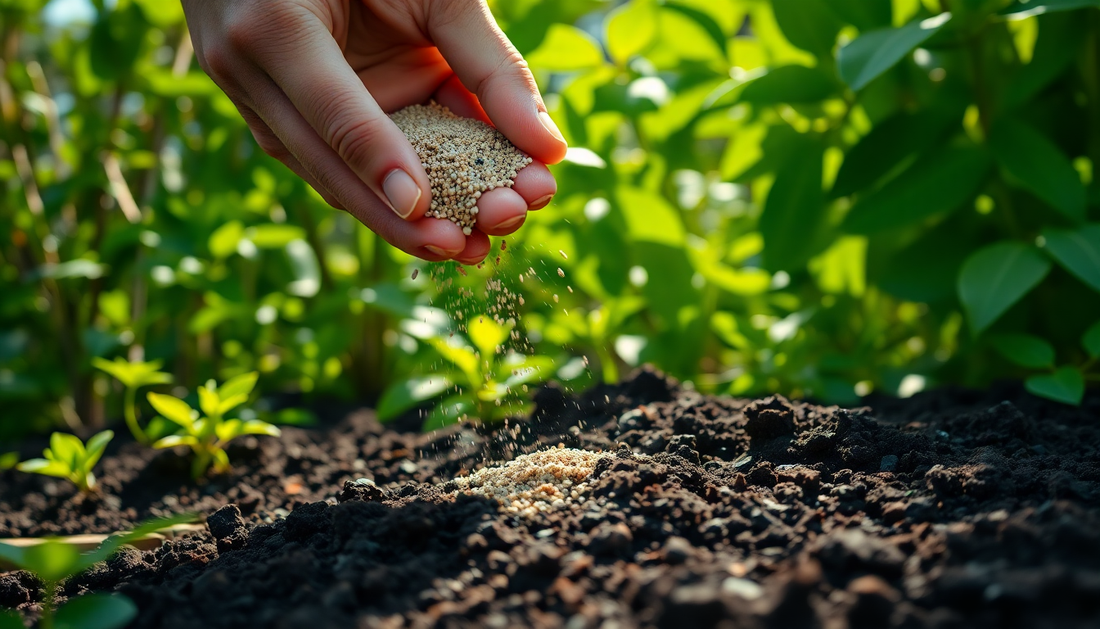
How to Fertilize Plants: A Complete Guide for Beginners
Fertilizing is essential for healthy plant growth. While water and sunlight are important, plants also need nutrients to grow strong roots, lush leaves, and vibrant flowers. Fertilizer provides these nutrients, ensuring your plants stay healthy and productive. However, knowing how to fertilize correctly is crucial—too little fertilizer can lead to nutrient deficiencies, while too much can harm your plants.
This guide will teach you how to fertilize plants properly, from understanding the types of fertilizers to applying them at the right time and frequency.
Why Fertilizing Is Important
Plants require 17 essential nutrients for healthy growth. While some nutrients like carbon, hydrogen, and oxygen come from air and water, others must be absorbed from the soil. Over time, the soil's natural nutrient supply can become depleted, especially in potted plants or intensive gardening. Fertilizers replenish these nutrients, ensuring plants get what they need to thrive.
Macronutrients vs. Micronutrients
- Macronutrients: Nitrogen (N), phosphorus (P), and potassium (K) are the primary macronutrients, found in most fertilizers. Secondary macronutrients include calcium (Ca), magnesium (Mg), and sulfur (S).
- Micronutrients: Iron (Fe), manganese (Mn), zinc (Zn), copper (Cu), boron (B), molybdenum (Mo), and chlorine (Cl) are needed in smaller amounts but are still essential for plant health.
Types of Fertilizers
Fertilizers come in many forms, each suited for different types of plants and growing conditions. Here are the most common types:
1. Granular Fertilizers
Granular fertilizers are applied to the soil and release nutrients over time. They come in two varieties:
- Slow-release: Gradually releases nutrients over weeks or months, reducing the risk of over-fertilization.
- Quick-release: Provides an immediate nutrient boost but requires more frequent applications.
2. Liquid Fertilizers
Liquid fertilizers are mixed with water and applied to the soil or sprayed on leaves (foliar feeding). They offer fast results and are easy to adjust based on plant needs.
3. Organic Fertilizers
Derived from natural sources like compost, manure, fish emulsion, and bone meal, organic fertilizers improve soil health while providing nutrients. They release nutrients slowly and are ideal for sustainable gardening.
4. Synthetic Fertilizers
Synthetic fertilizers are chemically formulated to provide precise nutrient ratios. They work quickly and are commonly used in commercial agriculture and home gardening for fast results.
How to Choose the Right Fertilizer
Choosing the right fertilizer depends on your plant’s needs, the type of soil, and your gardening goals. Most fertilizers have an N-P-K ratio listed on the packaging, indicating the percentage of nitrogen (N), phosphorus (P), and potassium (K). Here’s how to choose based on the N-P-K ratio:
- High-Nitrogen Fertilizers (e.g., 10-5-5): Ideal for leafy plants like vegetables, herbs, and lawns.
- High-Phosphorus Fertilizers (e.g., 5-10-5): Best for flowering plants and root development.
- Balanced Fertilizers (e.g., 10-10-10): Suitable for general plant maintenance and overall growth.
Step-by-Step Guide to Fertilizing Plants
Now that you understand the basics, here’s how to fertilize your plants properly:
1. Test Your Soil
Before applying fertilizer, it’s a good idea to test your soil to determine its nutrient levels and pH. Soil testing kits are widely available, or you can send a sample to a local extension service for a detailed analysis. This will help you avoid over-fertilizing and ensure your plants get exactly what they need.
2. Read the Fertilizer Label
Always read the label carefully to determine the correct application rate. Over-fertilizing can damage your plants and contaminate groundwater. Follow the manufacturer’s instructions for the best results.
3. Apply the Fertilizer
The method of application depends on the type of fertilizer you’re using:
- Granular Fertilizer: Sprinkle it evenly around the base of the plant, avoiding direct contact with the stem or leaves. Water the soil afterward to help the nutrients penetrate.
- Liquid Fertilizer: Mix the recommended amount with water and pour it onto the soil around the plant’s base. For foliar feeding, spray the leaves with a diluted solution.
- Organic Fertilizer: Incorporate compost or manure into the soil before planting or use as a top dressing during the growing season.
4. Water After Fertilizing
Watering helps the nutrients dissolve and reach the plant’s roots. Be careful not to overwater, as this can wash away the nutrients.
5. Monitor Your Plants
Keep an eye on your plants for signs of nutrient deficiencies or excess. Adjust your fertilization schedule as needed based on plant growth and overall health.
How Often to Fertilize
How often you fertilize depends on the type of plant, growing medium, and fertilizer used. Here’s a general guideline:
- Houseplants: Fertilize every 4–6 weeks during the growing season (spring and summer) and reduce or stop fertilizing in winter.
- Vegetables and Annuals: Feed every 2–4 weeks with a balanced fertilizer.
- Perennials, Shrubs, and Trees: Fertilize once in early spring and again in mid-summer if needed.
- Lawns: Apply nitrogen-rich fertilizer 2–4 times a year, depending on the grass type.
Signs of Over-Fertilization and Under-Fertilization
Fertilizing too much or too little can cause problems. Here’s how to recognize the symptoms:
Over-Fertilization
- Yellowing or browning leaf tips
- Crusty buildup on the soil surface
- Stunted growth
- Wilted or burnt-looking leaves
Solution: Flush the soil with water to remove excess nutrients and reduce fertilization frequency.
Under-Fertilization
- Pale or yellowing leaves
- Slow growth
- Small or underdeveloped flowers and fruits
Solution: Apply a balanced fertilizer and monitor for improvements.
Conclusion
Fertilizing is a crucial part of plant care that ensures your plants receive the nutrients they need for healthy growth. By choosing the right fertilizer, following proper application methods, and monitoring your plants, you can help them thrive and reach their full potential. Remember, consistency and moderation are key—feed your plants regularly, but avoid overdoing it for the best results.
